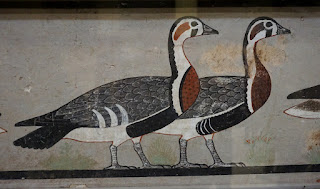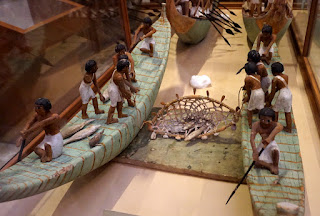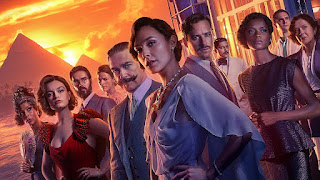February 26, 2022
We finally got a good night’s sleep last night. Hopefully we are now over our jet lag. For breakfast we tried the Egyptian 'Ful'. This is a stew of cooked Fava beans topped with oil and spices. It looks and tastes like Mexican refried beans. Aimee loves it.
To learn more about this heritage we visit three mosques. The first is the Mosque of Muhammad Ali. It sits inside the Citadel, a sprawling stone castle sitting high above the Nile valley on the eastern edge of Cairo. This impressive fortification was first built by Sultan Saladin in the 12th century to protect Cairo from potential invasion by Christian Crusaders. Our guide gave us a brief history of Egypt and Cairo after the Pharaohs. It was mostly one of being conquered for its great wealth of resources. First by Alexander the Great, then the Romans, followed by the Muslims, the Ottoman Empire, and then Napoleon. Muhammad Ali was the Ottoman sent to recover Egypt from the French. He ended up ruling Egypt and modernizing the nation.
Pasha Muhammad Ali built Cairo’s most distinctive mosque inside the Citadel. It looks like the Hagia Sophia in the Ottoman capital of Istanbul. We take off our shoes and enter the outer courtyard with its ablution fountain where Muslims purify themselves before prayer. We then enter the mosque where Muslims are led in prayer while facing Mecca. Afterwards we go out to the plaza where we get a view of Cairo. We can see the pyramids on the opposite ridge. Modern Cairo is a forest of apartment buildings.
Our next stop is just below the Citadel with two side-by-side mosques. The first is Al Rifai. Inside our guide gives a rundown on how to be a good Muslim. For me the most interesting part is that the mosque also contains the tomb of King Farouk who was deposed by Nasser in 1952. Surprisingly it also contains the tomb of the Shah of Iran. He died while in exile here.
We then went next door to the Mosque of Sultan Hassan. This one is much older, being built in the 14th century.
Finished with our Muslim tour, we next explored Christian Coptic Cairo. Copt is merely a corruption of the Greek spelling of Egypt. While 90% of Egyptians today are Muslim, it was majority Christian for centuries, having been brought here by St. Mark around 48AD.
We also visited the nearby church of St Sergius and Bacchus. It is supposed to be nearly as old and is built atop the spot where the Holy Family lived when they escaped to Egypt. Joseph may have worked at the Roman Fortress.
We then drive through slow heavy traffic to the Khan el Khalili bazaar where we have a big lunch. We begin with the now standard Middle East starter of bread with Hummus, Tahini, Tzatziki, and Baba Ganoush (eggplant) sauces, and then a variety of spiced meats. It is finished with several small, tasty desserts.
We have some time after lunch to explore the massive outdoor market. I thought it was pretty cool years ago, but it has turned into a purely tourist market with very persistent vendors. Even Aimee has no interest in spending time here.































